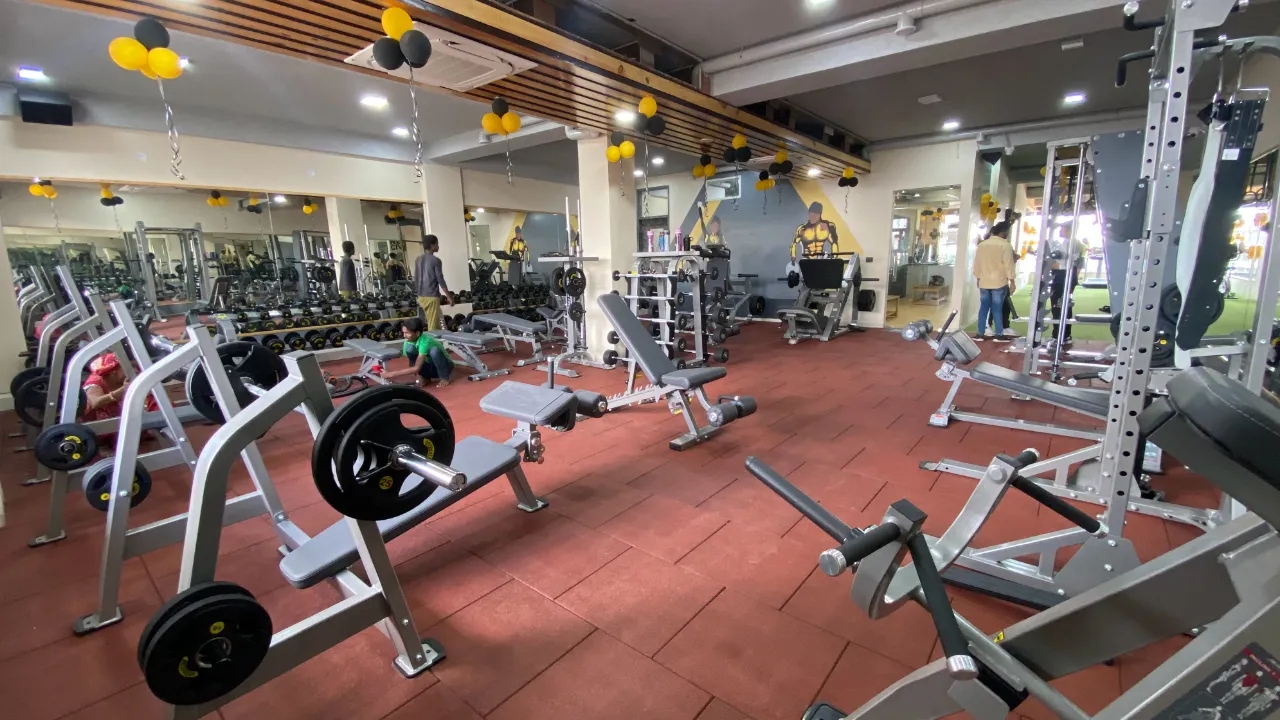When it comes to creating a comfortable and efficient gym environment, many gym owners and fitness enthusiasts often overlook the importance of flooring. While durable gym floors are essential, the comfort and safety of your workout space are equally important. This is where anti-fatigue gym mats come into play. These mats not only protect your floors but also provide crucial benefits to anyone engaging in long workouts. Whether you’re a personal trainer, gym owner, or dedicated fitness enthusiast, understanding the importance of anti-fatigue mats and choosing the right ones for your space is essential.
In this blog, we’ll explore why anti-fatigue gym mats are a must-have, the benefits they offer, and how to choose the right mats for your gym, all while ensuring comfort, safety, and durability.
What are Anti-Fatigue Gym Mats?
Anti-fatigue gym mats are specially designed mats that help reduce the physical stress associated with standing or exercising for long periods. These mats are typically made from materials that provide cushioning and support, relieving pressure on joints, muscles, and the spine. They are primarily used in areas where individuals are likely to stand for extended periods, such as workout floors, weightlifting zones, or areas with cardio equipment.
The unique properties of anti-fatigue mats allow them to absorb the impact of your movements, minimizing discomfort and fatigue, which ultimately enhances performance. When used correctly, these mats not only protect your body but also help prevent injury, making them an essential accessory for gyms and fitness studios.
Why Anti-Fatigue Mats are a Must-Have for Long Workouts
1. Enhanced Comfort and Support
One of the most significant benefits of anti-fatigue mats is the enhanced comfort they provide. Long periods of standing or engaging in high-intensity workouts can cause strain on your feet, knees, and back. Anti-fatigue mats are designed to provide extra cushioning, reducing pressure and ensuring that you can focus on your workout without distraction. This is particularly important in areas like weightlifting zones or during training sessions where exercises involve a lot of standing or repetitive motions.
2. Reduced Joint Pain and Fatigue
Standing or working out for extended periods without proper cushioning can lead to muscle fatigue and joint pain, especially in the knees, lower back, and hips. Anti-fatigue mats help to distribute the pressure more evenly across your body, reducing strain on joints. By absorbing some of the impact from your movements, they minimize the likelihood of soreness and fatigue, which can be a common issue for gym-goers or trainers performing long workouts.
3. Improved Performance
When your body is less fatigued and more comfortable, your performance can improve significantly. Whether you’re lifting weights, performing cardio, or doing high-intensity interval training (HIIT), having the right flooring can make a big difference. Anti-fatigue mats help maintain energy levels, allowing you to focus better on your form, movement, and endurance during your workout. This, in turn, leads to better results, fewer breaks, and more effective training.
4. Injury Prevention
Repetitive high-impact exercises such as jumping, running, or lifting weights can place stress on muscles and joints. Over time, this can lead to overuse injuries. Anti-fatigue gym mats act as shock absorbers, reducing the risk of impact-related injuries. They also help prevent slipping and falling, making them a safety feature as well as a comfort addition. Gym environments that include weightlifting or jumping exercises benefit the most from anti-fatigue mats, as they offer an extra layer of protection from injuries.
5. Versatility
Anti-fatigue mats are versatile and can be used in various areas within your gym or fitness studio. Whether you’re looking to enhance the comfort of your weightlifting area, cardio zone, or even stretching and yoga space, these mats can be easily placed in specific spots where standing or heavy impact is common. They are available in different sizes, thicknesses, and materials, making it easy to find the perfect fit for your gym’s needs.
How to Choose the Right Anti-Fatigue Gym Mats for Your Space
When choosing anti-fatigue mats for your gym, several factors need to be taken into consideration to ensure they meet your needs and provide the best performance. Here are some key factors to consider:
1. Material
Anti-fatigue mats come in various materials, each with unique benefits. The most common materials for gym mats include:
- Rubber: Rubber mats are durable, slip-resistant, and provide excellent cushioning. They are also resistant to wear and tear, making them ideal for areas with heavy traffic and equipment. Rubber mats are also water-resistant, which makes them easy to clean.
- Foam: Foam mats are lightweight and soft, providing a good level of cushioning for users. However, they may not be as durable as rubber mats. Foam mats are best for lighter activities like stretching or yoga.
- PVC/Vinyl: PVC or vinyl mats are easy to clean and maintain, offering durability and comfort. They tend to be less cushioned than rubber or foam, but still provide significant relief for long periods of standing.
2. Thickness
The thickness of the mat plays a crucial role in its effectiveness at reducing fatigue. Thicker mats provide more cushioning and are generally better for areas with high-impact activities. However, extremely thick mats may not be necessary for lighter, lower-impact exercises. Consider the types of workouts being performed in the area to determine the appropriate thickness.
3. Slip Resistance
Safety is a top priority in any gym, and anti-fatigue mats should have a slip-resistant surface. This is particularly important in areas where clients perform high-intensity exercises that involve quick movements or where sweat may accumulate. Make sure the mats you choose have a textured or non-slip surface to prevent slipping and falling.
4. Durability
Since anti-fatigue mats are often used in high-traffic areas, it’s important to choose mats that are durable and long-lasting. Rubber mats are typically the most durable, but depending on your gym’s needs, foam or PVC mats may also be suitable. Make sure the mats you choose can handle the wear and tear of daily use, heavy gym equipment, and high-intensity workouts.
Where to Use Anti-Fatigue Mats in Your Gym
Anti-fatigue mats are ideal for various areas in your gym, including:
Weightlifting Zones: These mats can absorb the impact from heavy weights and help reduce stress on your joints during lifting exercises.
Cardio Areas: Use anti-fatigue mats to make standing workouts, such as cycling or stair climbing, more comfortable.
Stretching and Yoga Zones: These mats offer additional cushioning and comfort for floor exercises, stretching, and yoga.
Reception Areas: If your gym staff spends long hours standing, placing anti-fatigue mats at the reception or front desk will provide comfort and reduce fatigue.
Conclusion: Invest in Anti-Fatigue Gym Mats for Long Workouts

Anti-fatigue gym mats are a must-have for any fitness space, offering numerous benefits that improve comfort, support, and performance during long workouts. Whether you’re lifting weights, doing high-intensity training, or standing for extended periods, these mats ensure that your joints, muscles, and overall well-being are protected. Investing in high-quality anti-fatigue mats can make your gym a safer, more comfortable place for both trainers and clients.
At Fab Flooring Dubai, we offer a wide range of anti-fatigue mats that can enhance your gym’s functionality and safety. Our expert team is here to help you choose the best mats for your space, ensuring that your gym provides the utmost comfort and support during every workout. Contact us today to explore our collection of anti-fatigue mats and improve the comfort and safety of your gym!
-
What are anti-fatigue gym mats, and how do they work?
Anti-fatigue mats are specially engineered surfaces that reduce physical strain during extended periods of standing or movement. They absorb pressure and stimulate subtle muscle engagement, improving circulation and endurance.
-
Why are these mats essential for long workout sessions?
During prolonged exercise, standing or repetitive movement can lead to foot fatigue, joint pressure, and muscular exhaustion. Anti-fatigue mats counteract this by offering cushioning and support that delays tiredness.
-
How do anti-fatigue mats benefit joints and muscles?
These mats reduce the impact on knees, hips, ankles, and the lower back by dispersing force evenly. This decreases stress on joints and prevents long-term strain injuries.
-
Are anti-fatigue mats only for weightlifting areas?
Not at all. They’re valuable in a variety of workout zones—like cardio stations, stretching areas, and even personal training spaces—where standing for extended periods is common.
-
Can these mats improve workout performance?
Yes. By minimizing discomfort and muscle fatigue, they help users maintain correct posture and energy levels throughout their routine—leading to better form and more consistent performance.
-
How thick should an anti-fatigue mat be?
Ideal mats range between 12mm and 20mm in thickness. This provides a balance between softness and stability—offering comfort without compromising footing or balance.
-
Are anti-fatigue mats easy to clean and maintain?
Absolutely. Most mats are made from closed-cell rubber or foam, which resists sweat and grime. They can be easily wiped down or cleaned with mild soap and water.
-
Do anti-fatigue mats help with slip prevention?
Yes. Many come with textured, anti-slip surfaces that enhance grip and reduce the chance of slipping—even when sweat or moisture is present.
-
Are these mats suitable for home gyms?
Definitely. They’re compact, affordable, and effective—making them an excellent addition to any home gym setup, especially for users who train for long durations.
-
Why should gym owners invest in anti-fatigue mats for their facility?
They enhance user comfort, prevent overuse injuries, and show commitment to member wellbeing. Offering anti-fatigue zones sets a facility apart as thoughtful, safe, and high-performance.

